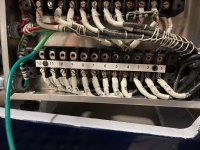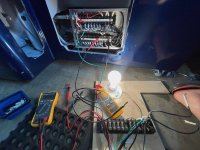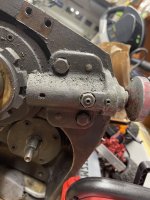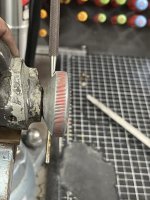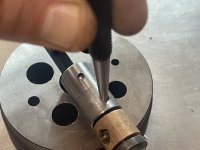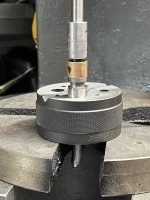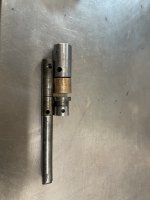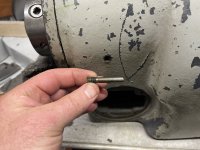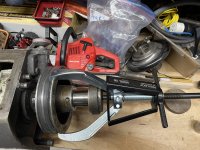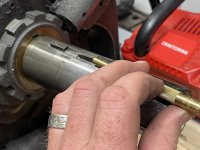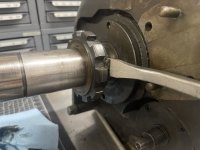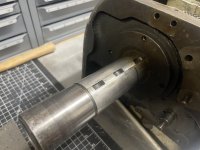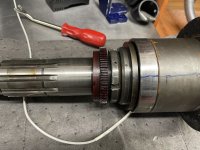GrantGunderson
Hot Rolled
- Joined
- Jun 4, 2021
- Location
- Bellingham, WA
Ok, so I tested each winding with my clamp meter by applying 120V ac across each one. I only got a few seconds before it blew the fuse each time on the extension reel I used. So these are possibly just start up amperage, but they do seem quite high. The motor does start to spin with each coil test.
So for coil 1-4 I got 47.8 AMps
Coil 7-10 I got 48 amps
coil 9-12 I got 47.8 amps
coil 6-3 I got 48 amps
coil 11-8 I got 47.8 amps
coil 2-5 I got 48 amps
Cal suggested that I purchase a cheap variable speed control for a motor, to use to check each winding at a lower voltage.
I also tested the clamp meter VS my Fluke 117 using one of the power leads for my Bridgeport.
The clamp meter consistently read high, but by carrying amounts.

1.8 Vs 1.3 A

1.4 VS .993 A

1.2 Vs .835 A

1.4 VS 1.2 A
So that is less than confidence inspiring for the clamp meter, but I dont think it explains such high values with the motor windings.
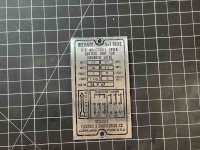
The name plate for the motor reads max 6.6 Amps at 440V isn't that spread over 4 windings in series?
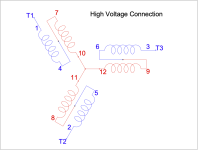
It reads 13.2 amps at 220 V I believe thats across two sets of windings in series in parallel.

So then with 120V with just one winding would that make sense for the higher amperage ?
Now, If I do some basic math with Ohms law V=IR, plugging in the measurements I recorded lets see if we can make sense of it all.
so 48AX0.7Ω = 33.6 V.
or I = V/R so 120V / 0.7Ω = 171A
or R = V/I so 120V/48A= 30Ω
None of the calculated numbers work out with the data I recorded. Something is clearly wrong.
Humm. If I take the numbers I got from one winding and multiplied it by 4 (for having 4 windings in series) I then get numbers that make sense for what I am reading.
33.6V x 4 windings would be 134.4V
120v / (.7Ω x4 windings) = 42.8A
120V / 48A x 4 windings) 0.625Ω
Does this make sense? Or am I just talking myself into thinking it does? Or have I just proven I'm off everywhere by a factor of 4? I think I need to calculate the equivalent for the numbers I got at @220 and @440 for a single coil if that makes sense.
FYI the wiring Diagrams are by Cal.
So for coil 1-4 I got 47.8 AMps
Coil 7-10 I got 48 amps
coil 9-12 I got 47.8 amps
coil 6-3 I got 48 amps
coil 11-8 I got 47.8 amps
coil 2-5 I got 48 amps
Cal suggested that I purchase a cheap variable speed control for a motor, to use to check each winding at a lower voltage.
I also tested the clamp meter VS my Fluke 117 using one of the power leads for my Bridgeport.
The clamp meter consistently read high, but by carrying amounts.

1.8 Vs 1.3 A

1.4 VS .993 A

1.2 Vs .835 A

1.4 VS 1.2 A
So that is less than confidence inspiring for the clamp meter, but I dont think it explains such high values with the motor windings.

The name plate for the motor reads max 6.6 Amps at 440V isn't that spread over 4 windings in series?

It reads 13.2 amps at 220 V I believe thats across two sets of windings in series in parallel.

So then with 120V with just one winding would that make sense for the higher amperage ?
Now, If I do some basic math with Ohms law V=IR, plugging in the measurements I recorded lets see if we can make sense of it all.
so 48AX0.7Ω = 33.6 V.
or I = V/R so 120V / 0.7Ω = 171A
or R = V/I so 120V/48A= 30Ω
None of the calculated numbers work out with the data I recorded. Something is clearly wrong.
Humm. If I take the numbers I got from one winding and multiplied it by 4 (for having 4 windings in series) I then get numbers that make sense for what I am reading.
33.6V x 4 windings would be 134.4V
120v / (.7Ω x4 windings) = 42.8A
120V / 48A x 4 windings) 0.625Ω
Does this make sense? Or am I just talking myself into thinking it does? Or have I just proven I'm off everywhere by a factor of 4? I think I need to calculate the equivalent for the numbers I got at @220 and @440 for a single coil if that makes sense.
FYI the wiring Diagrams are by Cal.
Last edited:




